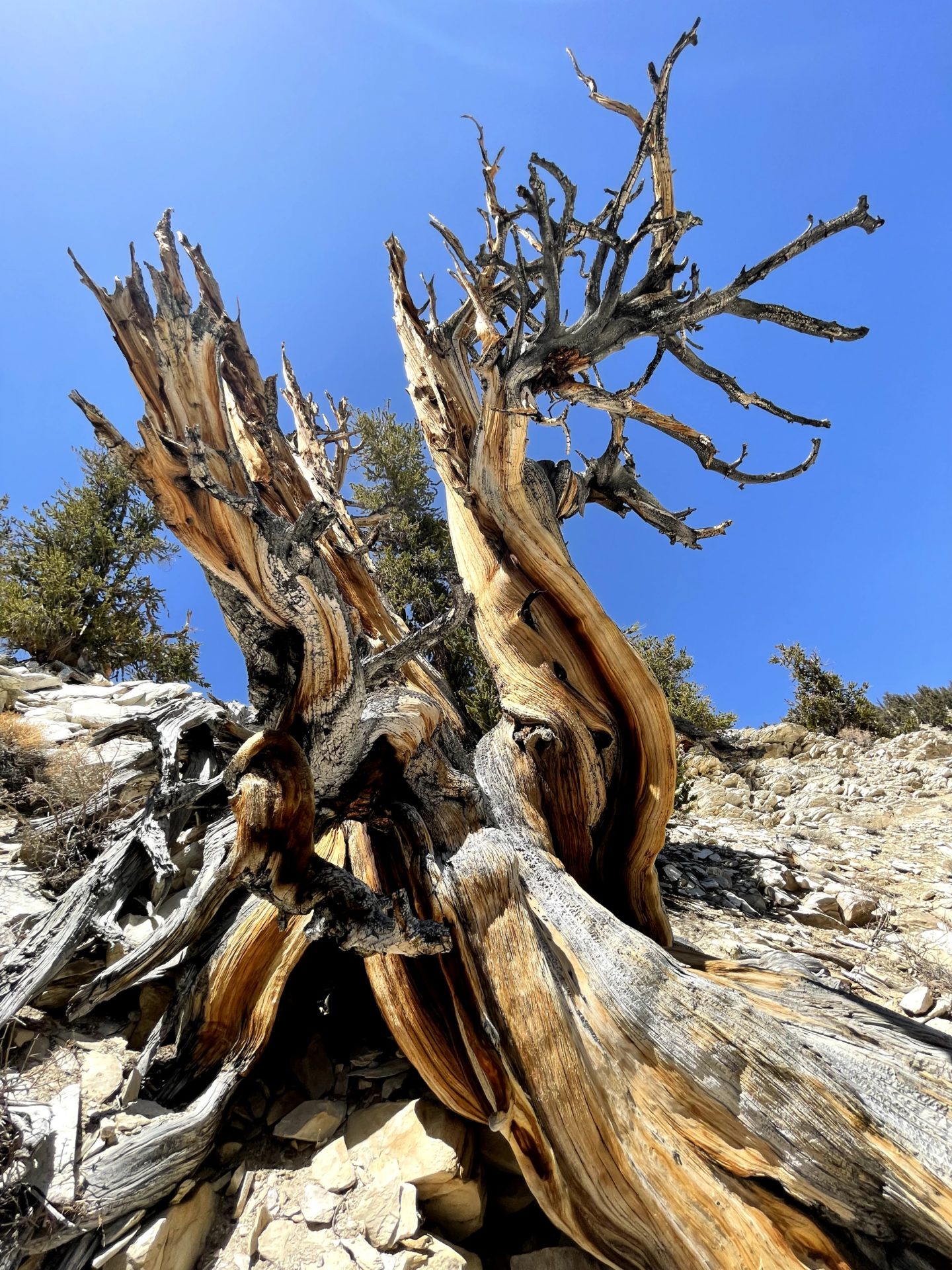1. What’s the oldest tree on Earth — and will it survive climate change?
Two ancient trees bring attention to the threat of global warming.
The story: In eastern California, a Great Basin bristlecone pine known as Methuselah has long been considered Earth’s oldest living thing. According to tree-ring data, it is 4,853 years old — meaning that Methuselah was well established by time ancient Egyptians built the pyramids at Giza.
But wait — a challenger has emerged to vie for Methuselah’s record, reports National Geographic’s Craig Welch. In Chile, a Patagonian cypress known as the Alerce Milenario or Gran Abuelo (great-grandfather) could be 500 years older than the current reigning champion.
Scientist Jonathan Barichivich computed the Alerce Milenario’s age using tree-ring data from a partial core sample, combined with information extrapolated from statistical models. Though his methods have been met with skepticism by some specialists, Barichivich expects to publish his findings in a scientific journal in the coming months.
The big picture: No matter which contender — the bristlecone pine or the Patagonian cypress — takes the title, experts are concerned with how change climate will affect the world’s ancient trees, Welch writes. In California, wildfires exacerbated by climate change have destroyed thousands of giant sequoias, which are in the same botanical family as the Alerce Milenario. In Chile, warmer weather is drying the forest where it is located — and that could threaten the tree’s water uptake.
Barichivich said he hopes excitement over the Alerce Milenario brings it better protections. Currently visitors to the Alerce Costero National Park in central Chile, where the “great-grandfather” is located, can walk around the tree, which is compacting the soil and potentially harming its roots.
“My hope is that viewers can think for a fraction of a second about what it means to live 5,000 years and see life in perspective,” Barichivich said. “And that would make people understand the challenge nowadays is the ecologic and climate crisis that we’re facing.”
2. Can cross-breeding protect endangered species from the climate emergency?
Hybridization could help some animals adapt to rising temperatures, but there’s a cost.
The story: Cross-breeding — which occurs naturally when animals of different species breed in the wild — is becoming more common as global warming accelerates and species migrate in search of cooler climates. In Alaska and Canada, for example, grizzlies have moved into polar bear country to escape the heat. The result: grolar bears — or pizzlies, if you prefer.

Now scientists are considering the implications of intentionally cross breeding animals to help them resist climate change. The Guardian’s Ida Emilie Steinmark writes that some scientists believe hybridization could give animals “an evolutionary head start in the race to genetically adapt to global heating …. Others are wary of losing millennia-old species as they are mixed with different animals.”
“This debate reveals a chasm within conservation, revolving around the question: Can we protect animals while forcing them to change?” Steinmark writes.
The big picture: Earth’s vast biodiversity and the sweeping impacts of climate change make it impossible to protect all but the most charismatic animal species through cross-breeding, conservation biologist Juan Montoya-Burgos told The Guardian. “We need to act at the source of the problem, which is climate change,” he adds.
In 2020, a groundbreaking study led by Conservation International scientist Lee Hannah offered a solution to save more than half the species facing extinction — while slowing climate breakdown: Conserve just 30 percent of tropical lands.
“We modeled the potential movements of hundreds of thousands of species under different climate scenarios,” Hannah told Conservation News. “Then, we combined those models with the known locations of several hundreds of thousands more species. This combination allowed us to determine the best regions to protect species — both where they are now and where they might be in the future.”
“Our results showed us that if we limit temperature increase to 2 degrees Celsius while conserving just 30 percent of tropical land area, then we can cut species extinction risk in half,” Hannah added.
3. Report: $80bn at risk in forest commodity supply chains, due to lack of action on deforestation
Companies must decrease deforestation to prevent climate-related losses, finds a new report.
The story: Commodities such as soy, rubber and timber are responsible for 40 percent of global deforestation. Across companies’ supply chains, deforestation could result in financial losses of more than US$ 80 billion, according to a new “Global Forests Report” released by nonprofit CDP, which runs global disclosure systems for investors, companies and others managing their environmental impacts. Just 211 of the 675 companies surveyed have disclosed this risk — which means that the projected losses across all companies could be as high as US$ 240 billion if they do not act to protect forests, reports Sarah George for edie.

The big picture: Last year, more than 30 financial institutions pledged to eliminate agricultural commodity-driven deforestation from their portfolios and increase investments in nature-based solutions by 2025. Although more companies are working to disclose and mitigate their climate risks, they often lack the tools and expertise needed to measure deforestation-related emissions.
A new public-private partnership, which includes The Rainforest Alliance, USAID, CDP, Conservation International and others, will help companies reduce their deforestation, while driving investments in sustainable commodities. By 2026, the project aims to reduce emissions by 12.1 million tons by improving natural resource management across 1.8 million hectares (4.4 million acres) of land.
Source: conservation.org








